CAD Models & Simulations Gallery
Discover a curated collection of high-fidelity CAD models, showcasing rocket engines, turbopumps, aerospace flow instrumentation, and re-entry vehicles. Each model is supported by detailed engineering analysis, including CFD simulations of shockwaves, hypersonic flow around re-entry bodies, and thermal and structural evaluations under extreme operating conditions. From detached shock wave visualization in high-Mach atmospheric re-entry to turbopump flow dynamics and thrust chamber cooling, every project features 3D visualizations, performance plots, and technical documentation—highlighting real-world design intent and functional behavior.
← Select a model from the sidebar to begin
Rocket Engine Turbopump
A detailed model of a rocket engine turbopump assembly. This critical component is responsible for delivering propellants at high pressure and flow rates to the combustion chamber. The design features both turbine and pump sections with precision-engineered impellers and housing.
Technical Analysis
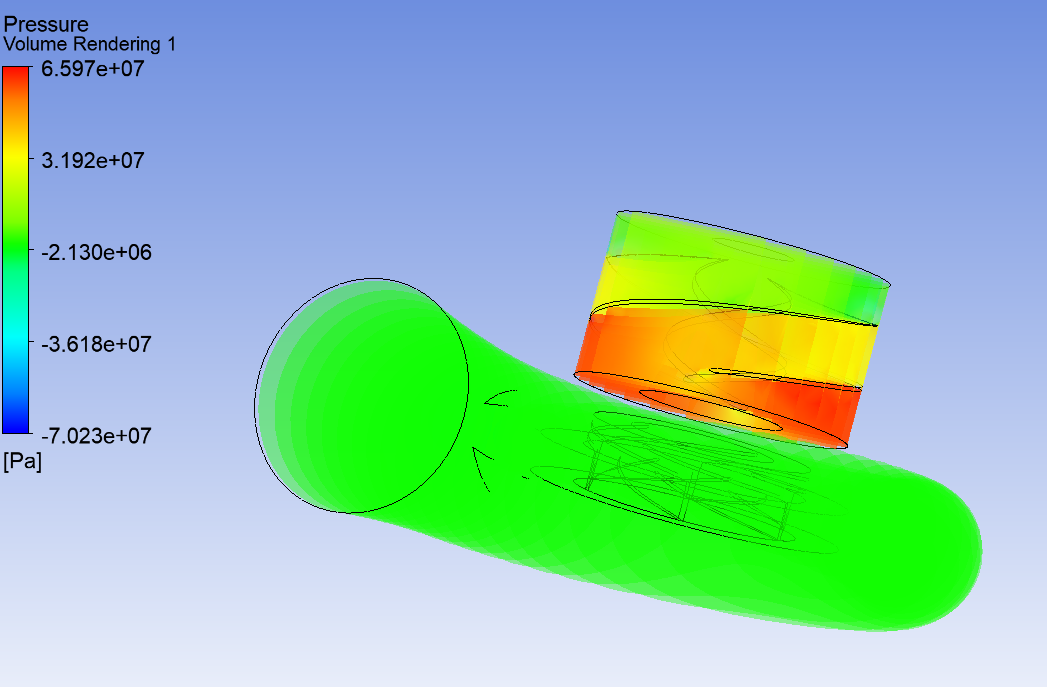
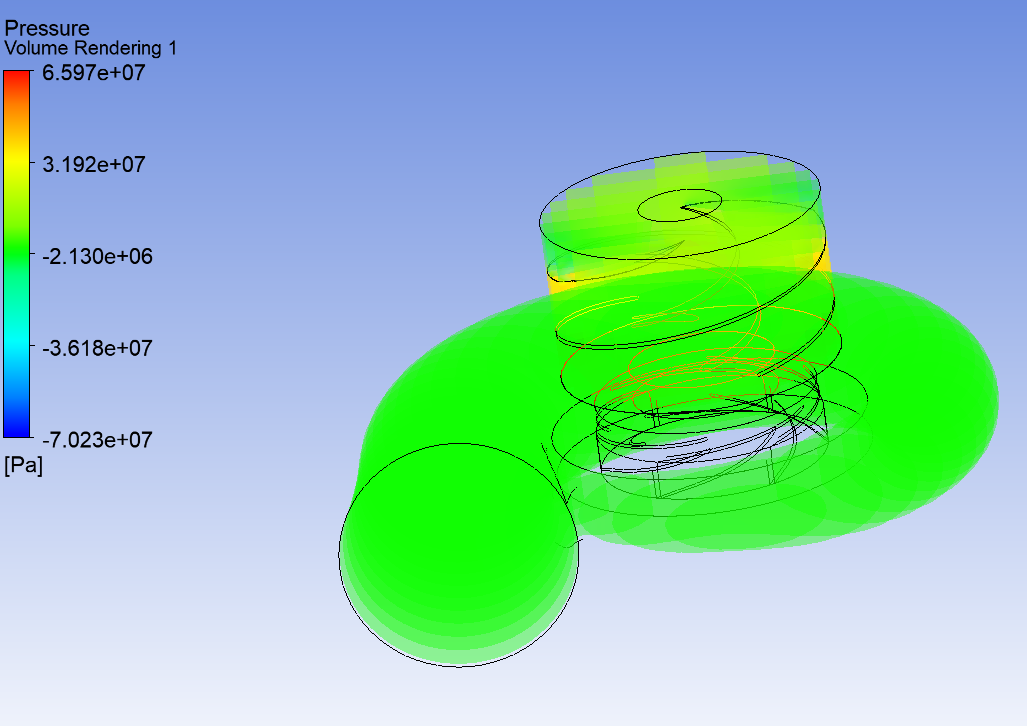
Design Features
-
The turbopump assembly is designed with a strategic choice of materials to balance
structural performance, chemical compatibility, and mass efficiency. The volute casing is
6061-T6 aluminum alloy
fabricated from , selected for its lightweight properties, good
corrosion resistance, and ease of machining—ideal for non-rotating, non-direct-contact
regions where reducing system mass is critical.
In contrast, the inducer, impeller, and stator vanes are made from Ti-6Al-4V titanium alloy,
owing to its high specific strength, excellent fatigue resistance, and compatibility with
cryogenic oxidizers such as liquid oxygen. Titanium also offers superior erosion resistance
in high-speed rotating components and maintains mechanical integrity under extreme pressure
and thermal gradients. This material configuration ensures a robust and efficient turbopump
capable of operating reliably under demanding rocket propulsion conditions.
- Staging: Multi-stage centrifugal pump, with first stage inducer and second stage impeller
- Fluid: RP-1
- Mass flow rate: 100kg/s
- Speed: 35,000 RPM
- Pressure difference: 175 bar
- Specific speed: 38.3
- Specific work: 21,472 m^2/s^2
- Power output: 2147.2 kW
- Head: 2189.6 m
Compressor for Turboshaft engine
A detailed model of a compressor for turboshaft engine, used in helicopters.
Design Features
- Staging: Single Stage
- Fluid: Air
- Mass flow rate: 4kg/s
- Speed: 26,000 RPM
- Pressure difference: 1.5 bar
- Specific speed: 100.8
- Specific work: 36,181 m^2/s^2
- Power input: 144.72 kW
Showerhead Injector Design
A Showerhead Injector is a type of propellant injector commonly used in liquid rocket engines. It
consists of multiple small orifices arranged in a showerhead-like pattern, typically on a flat
faceplate. Each orifice directs fuel and oxidizer into the combustion chamber, promoting atomization
and mixing. This injector is known for its simplicity and ease of manufacturing. It is especially
suitable for small-scale or experimental engines and is often used in educational or prototype
rocket systems.
Merits :
• Simple Design - Easy to fabricate with standard machining tools.
• Cost-Effective - Lower manufacturing and development costs.
• Uniform Distribution - Provides consistent propellant distribution across the chamber face.
• Reliable - Fewer components reduce the risk of mechanical failure.
Demerits :
• Poor Mixing Efficiency - Compared to swirl or impinging injectors, the mixing quality is lower.
• Limited Atomization - Droplet breakup and vaporization are less efficient.
• Risk of Combustion Instabilities - May lead to uneven combustion and performance fluctuations.
• Lower Performance - Not ideal for high-performance or high-thrust applications.
Technical Specifications
- Total mass flow rate: 513.16231 kg/s
- Oxidizer mass flow rate: 440.16625 kg/s
- Fuel mass flow rate: 72.99606 kg/s
- Number of orifice for fuel flow: 500
- Diameter of each fuel orifice: 1.944 mm
- Number of orifice for oxidizer flow: 1000
- Diameter of each oxidizer orifice: 3.12 mm
Coaxial Swirl Injector Design
A coaxial swirl injector is a type of liquid rocket engine injector designed to achieve efficient
atomization and mixing of propellants. In this configuration, one propellant (usually oxidizer)
flows through a central orifice while the other (usually fuel) is introduced tangentially through
swirl passages, creating a hollow conical spray sheet. The high shear between the coaxial streams
breaks the liquid film into fine droplets, promoting rapid evaporation and combustion stability.
Merits :
• Produces very fine droplets, enhancing mixing and combustion efficiency.
• Capable of stable operation across a wide range of flow rates.
• Helps reduce combustion instabilities due to uniform mixing.
• Compact design, suitable for high-performance engines.
Demerits :
• More complex to manufacture compared to simple orifice injectors.
• Swirl passages are prone to clogging or erosion under long-term operation.
• Higher pressure drop may be required to maintain effective atomization.
Technical Analysis
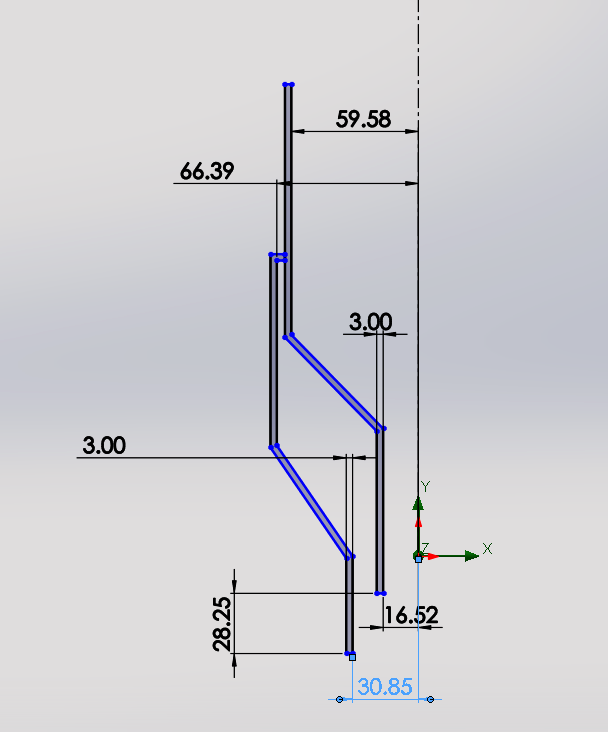
Ionic Thruster Mark 1
This model represents a compact ion propulsion system, designed for long-duration space missions where high efficiency and precision thrust control are essential. The thruster operates by ionizing xenon gas, accelerating the resulting ions through an electrostatic field, and expelling them to generate thrust with extremely high specific impulse (Isp).
Technical Specifications
- Electron Inlet (Discharge Cathode): The large-diameter pipe feeds electrons directly into the chamber to ionize the xenon atoms. These electrons are emitted from a cathode (typically a hollow cathode or thermionic emitter), and collide with neutral xenon atoms to generate positively charged ions (Xe⁺) through impact ionization.
- Xenon Inlet System: A series of small-diameter inlet tubes, arranged in a ring around the central chamber, introduce xenon gas uniformly into the ionization region. This ensures a stable and symmetric plasma discharge, vital for consistent thrust.
- Grid System: At the thruster's exit, a finely spaced grid structure is visible. This forms the acceleration stage, where high-voltage electrodes create an electrostatic field to accelerate positively charged xenon ions. The grid ensures beam collimation and minimizes ion divergence, improving propulsion efficiency.
- Electron Source (Neutralizer, at the end): The pipe at the end is used to inject electrons into the exhaust plume. These electrons neutralize the positive ion beam, preventing spacecraft charge buildup and maintaining electric balance in space.
Ionic Thruster Mark 2
This is a CAD model of a compact ion thruster, designed for deep space missions and low-Earth orbit
satellite station-keeping. The design features a cylindrical discharge chamber with a central
ionization zone, enclosed between structural support plates and integrated with electrical
feedthroughs for grid or cathode connections.
Key design aspects:
Central ion emitter or cathode, potentially coupled with a gas feed (e.g., Xenon or Argon) to
generate and accelerate ions.
Mounting rods and brackets to ensure rigidity and easy CubeSat integration.
Highly reflective metallic finish, optimized for thermal resistance and space-grade durability.
This thruster aims to deliver low thrust with high specific impulse, making it ideal for
applications such as deep space navigation, constellation orbit maintenance, and attitude control.
Future work includes plasma plume simulation, ion beam divergence analysis, and integration with
satellite power systems.
Technical Specifications
The thruster is constructed using material-specific design zones to ensure durability and performance in the harsh environment of space. Components that come into direct contact with the ionized plasma, such as the central discharge nozzle and inner acceleration surfaces, are fabricated from titanium alloy (shown in yellow-bronze color). Titanium offers excellent corrosion resistance, low sputter yield, and high thermal tolerance, making it ideal for sustained ion exposure. In contrast, the structural frame, support rods, and mounting plates are made from 6061-T6 aluminum alloy, chosen for its lightweight properties, high strength-to-weight ratio, and ease of machining—suitable for areas without direct ion impact. This strategic material segregation ensures both mission durability and mass efficiency, critical for satellite propulsion systems.
Supersonic flow over a double wedge
This project analyzes supersonic flow at Mach 3 over a double wedge geometry to study shock wave interactions and high-speed aerodynamic behavior. The sharp angles generate oblique shocks and complex shock-shock interactions, which are critical in the design of high-speed aerospace vehicles. The simulation captures pressure distribution, Mach contours, and flow separation zones, offering insights into wave dynamics relevant to supersonic and hypersonic applications.
Technical Analysis
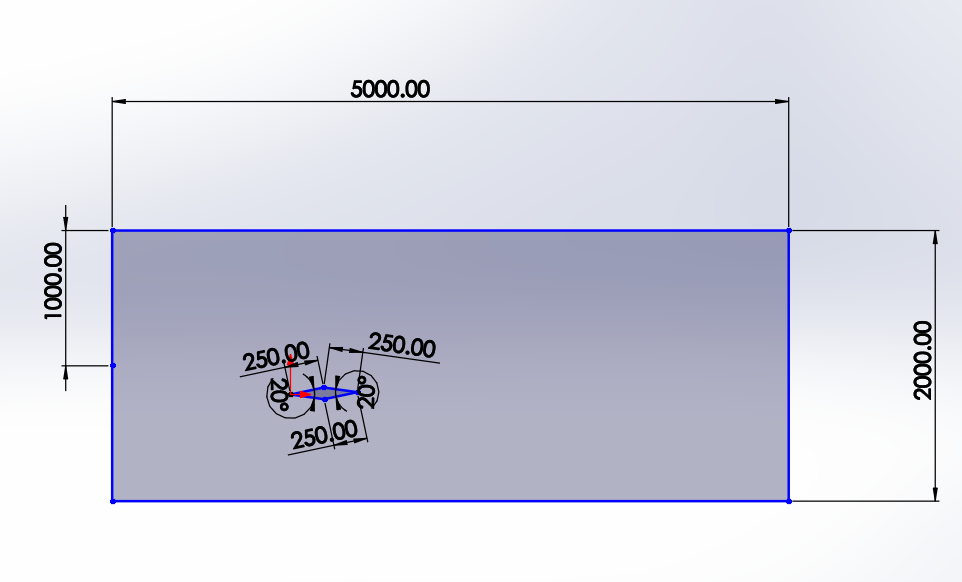
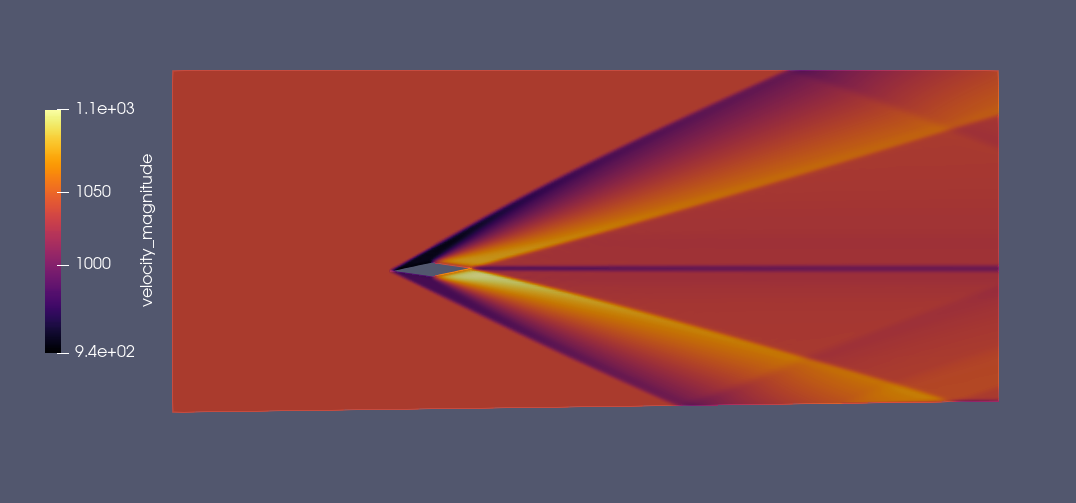
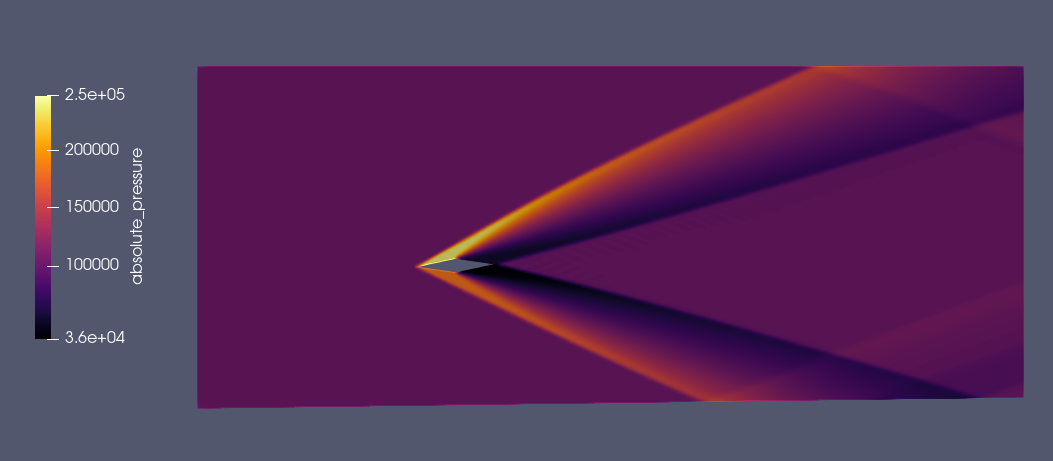
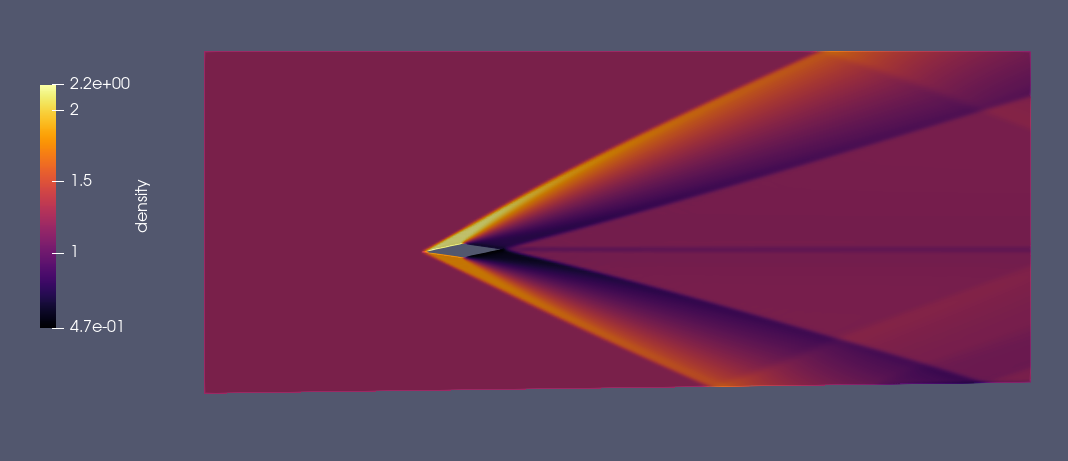
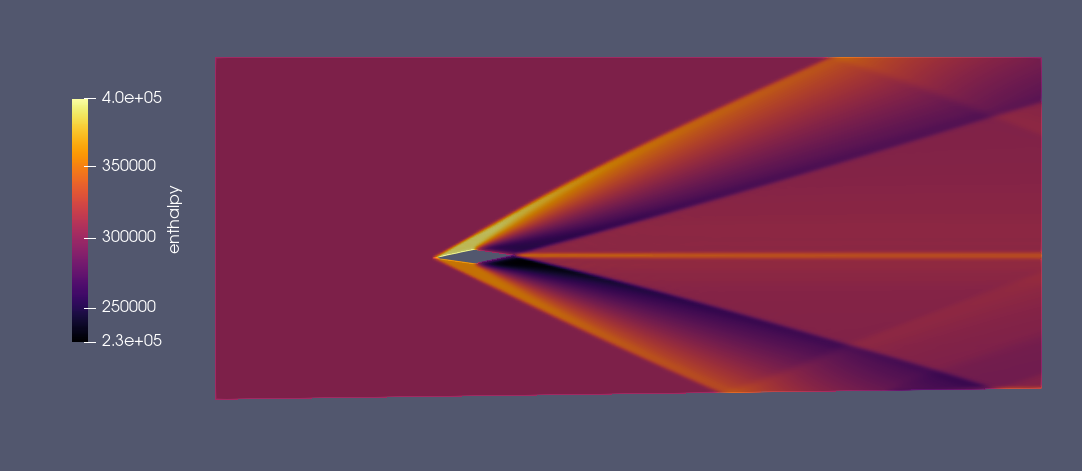
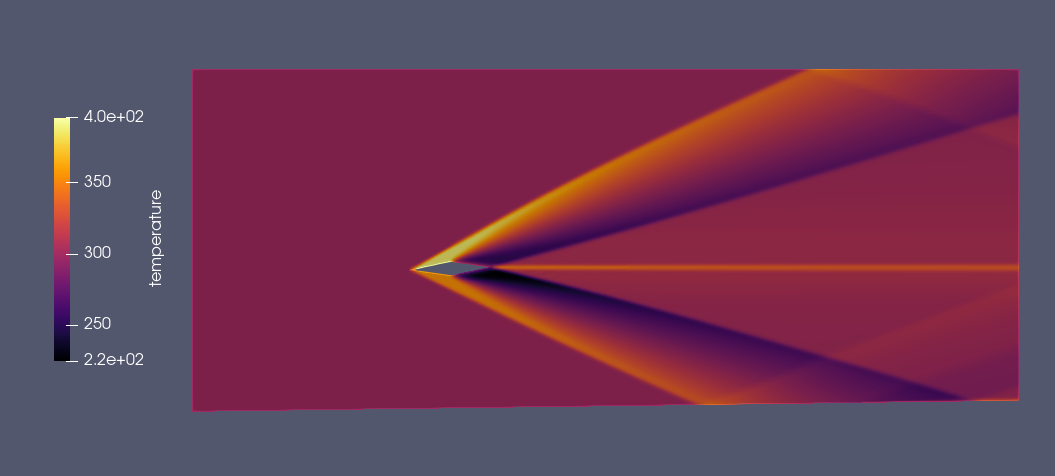
Technical Specifications
- Boundary Conditions: Walls and pressure farfield
- Velocity: Mach 3
Space Vehicle Re-entry CFD Simulation
This project involves the Computational Fluid Dynamics (CFD) simulation of a space vehicle during atmospheric re-entry, conducted using ANSYS Fluent. The simulation captures critical hypersonic flow phenomena such as aerodynamic heating. The analysis focused on temperature and pressure variation around the vehicle surface. High-temperature gradients at the stagnation point and along the heat shield, essential for Thermal Protection System (TPS) design.
Technical Analysis
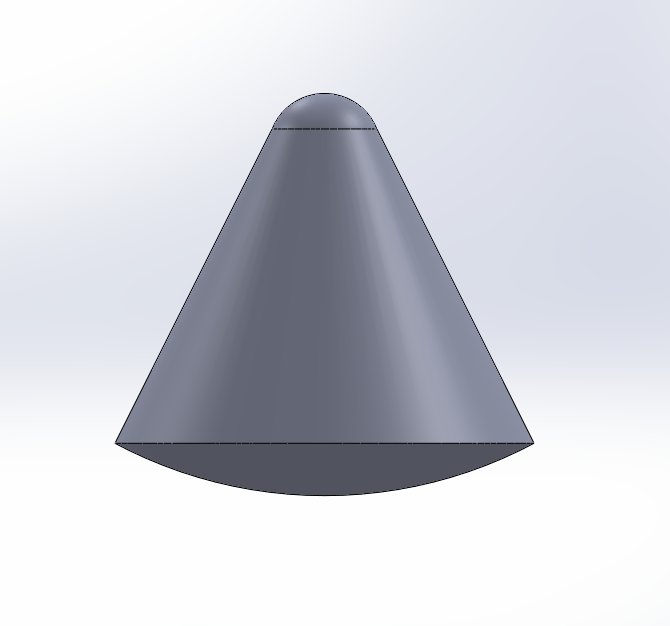
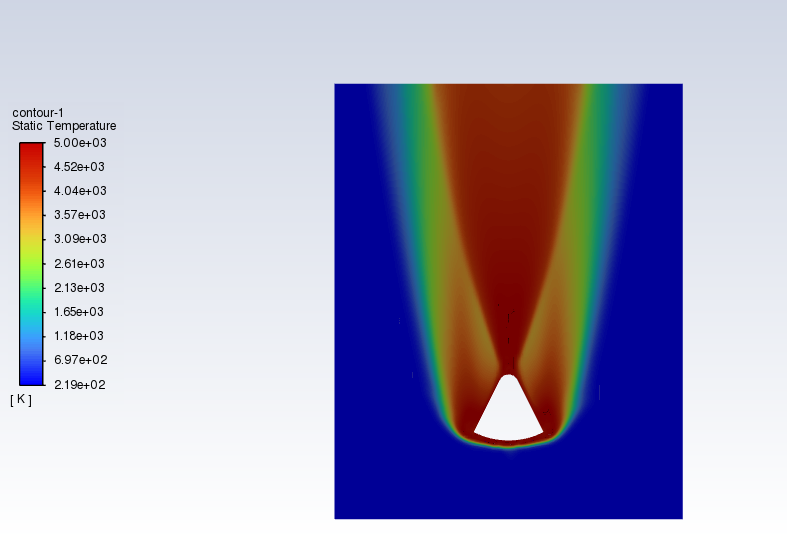
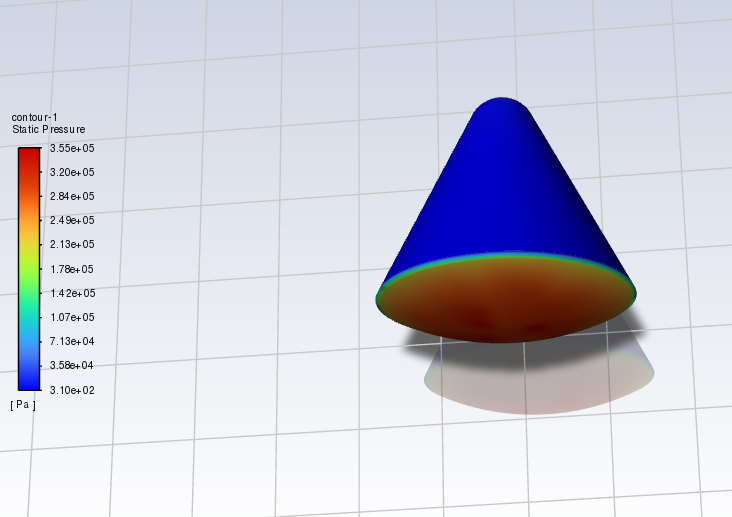
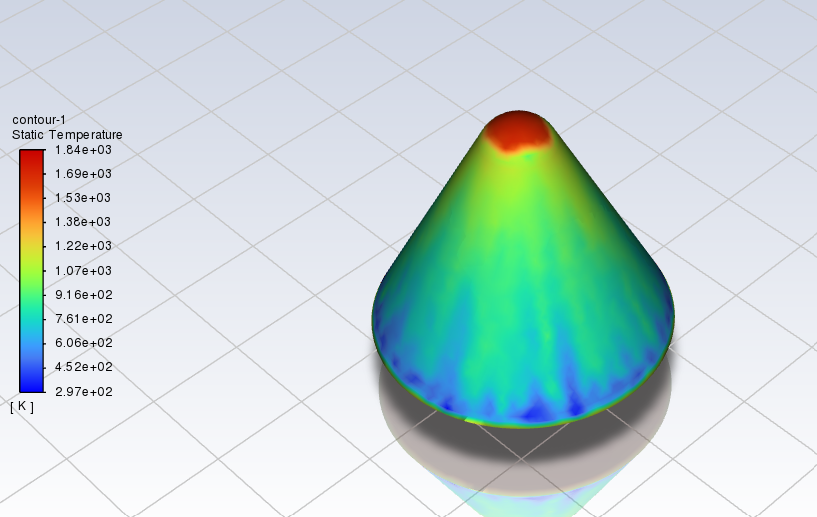
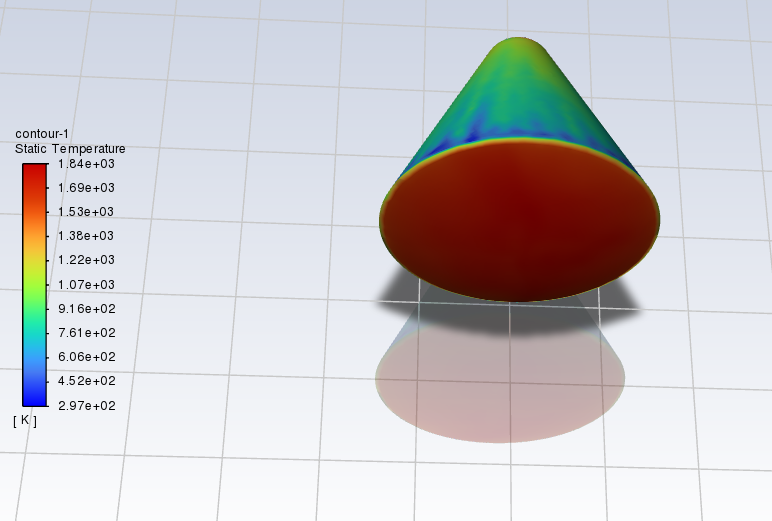
Technical Specifications
- Boundary Conditions: Walls and pressure farfield
- Velocity: 3D simulation run at Mach 5 and 2D at Mach 24
Detached Shock Wave CFD Simulation over a Sharp-Nosed Body
This simulation shows a detached shock wave forming ahead of a sharp-nosed re-entry body in hypersonic flow, modeled using ANSYS Fluent. Key observations: A detached bow shock, typically unexpected for sharp geometries, occurs here due to specific flow conditions such as high Mach number and low Reynolds number or thermal effects. Intense aerodynamic heating at the nose region, visible through the high-temperature contour (red). Gradual pressure and temperature gradients along the surface, relevant for evaluating thermal protection system (TPS) design. This case demonstrates that even sharp geometries can produce detached shocks in certain high-enthalpy flows, making it a valuable study in advanced hypersonic vehicle design and aerothermal analysis.
Technical Analysis

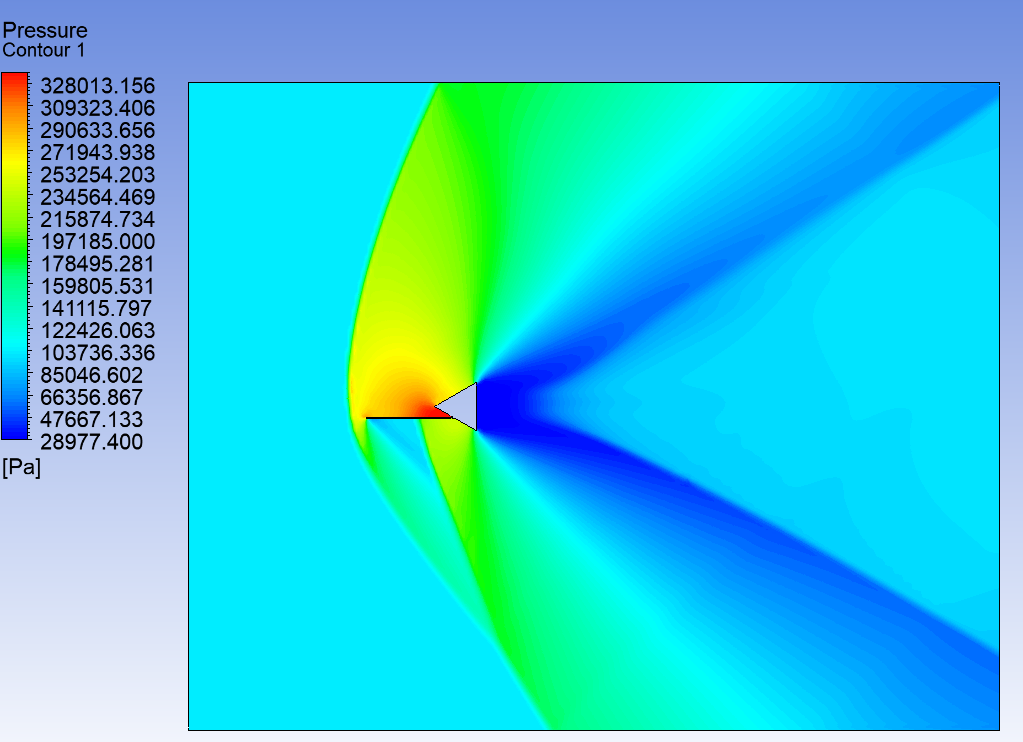
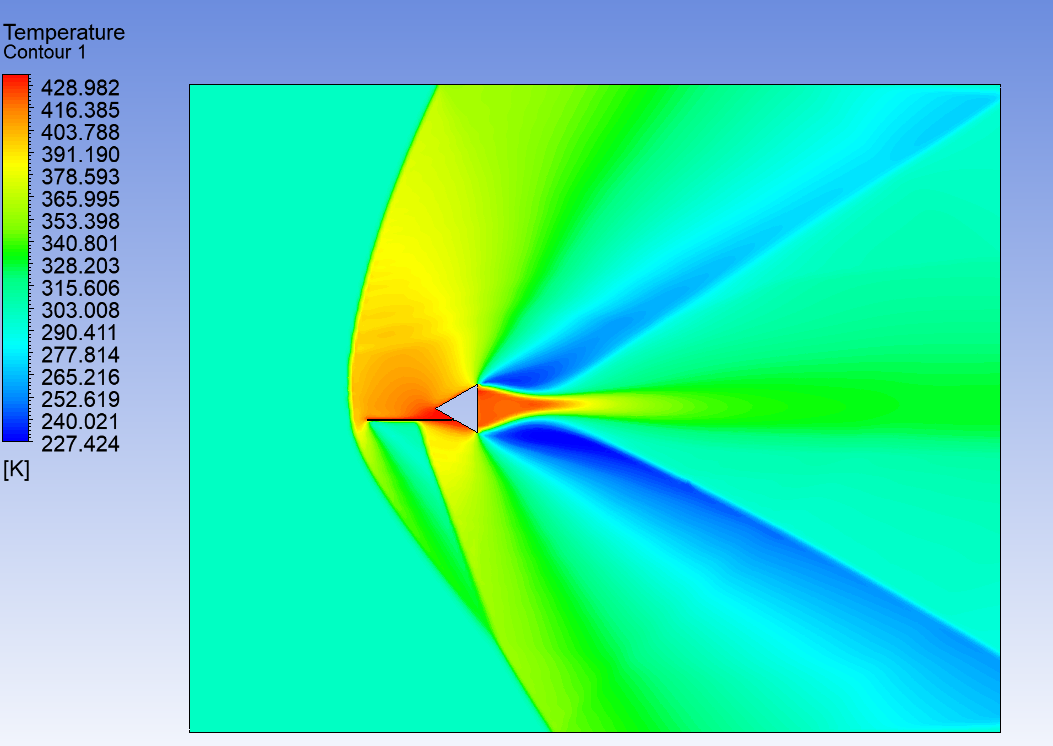
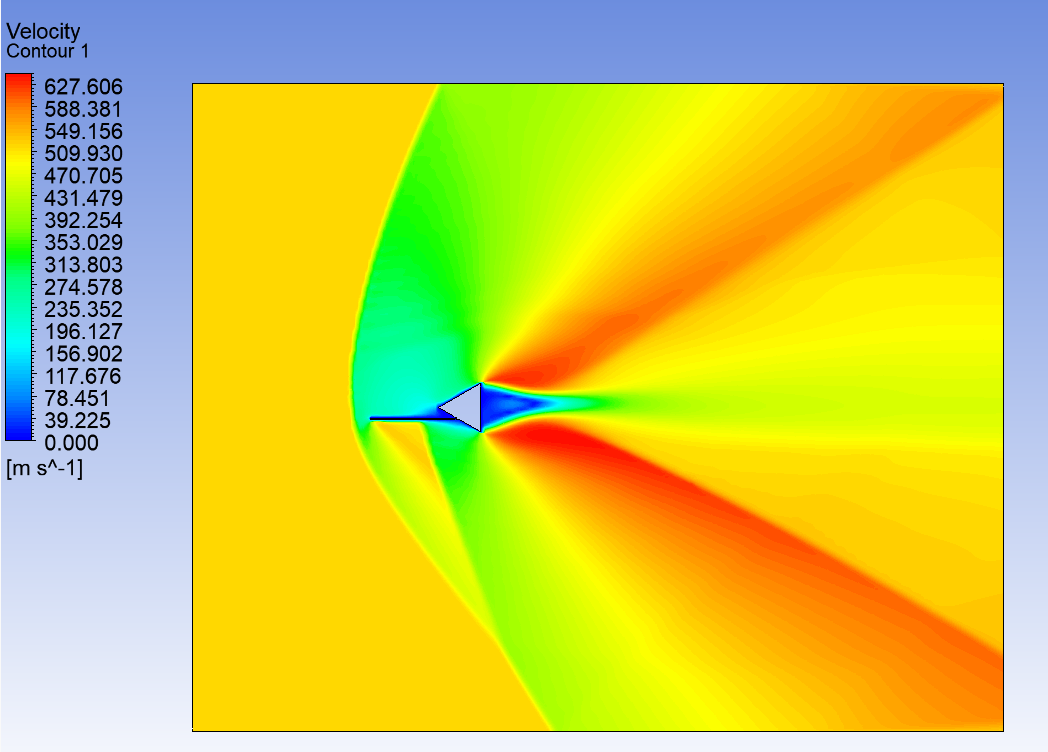
Technical Specifications
- Boundary Conditions: Walls and pressure farfield
- Velocity: Mach 1.5
RS-25 Rocket Engine
A detailed 3D model of the RS-25 (Space Shuttle Main Engine), one of the most advanced rocket engines ever built. This model showcases the complex internal structure and engineering excellence of this liquid-fueled rocket engine.
Technical Analysis
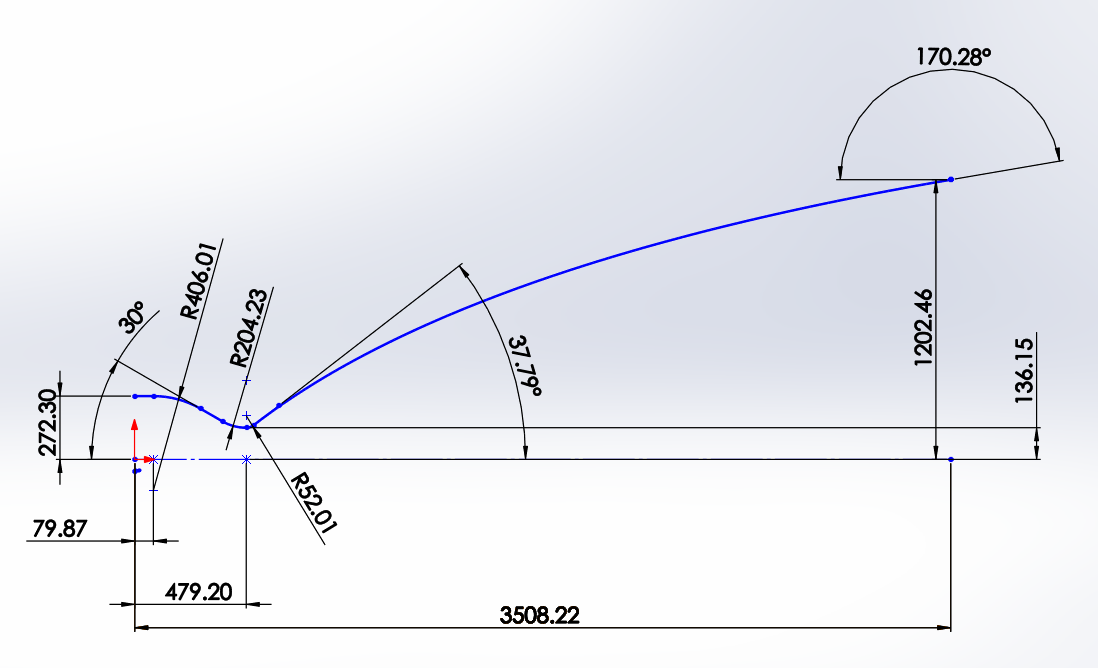
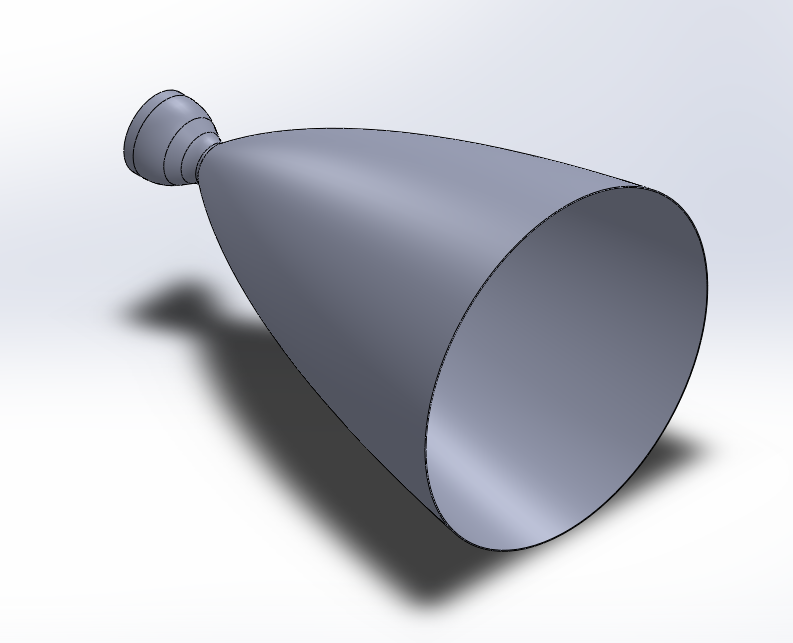
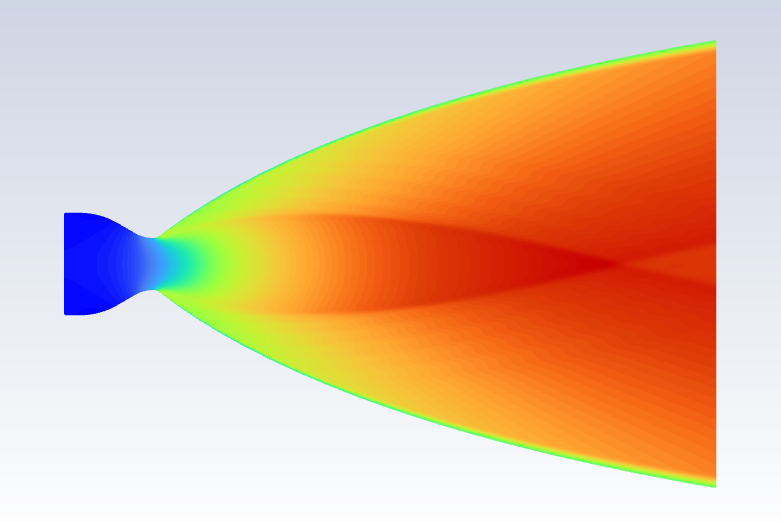
Technical Specifications
- Thrust: 2,279 kN at vacuum
- Specific Impulse: 452.3 seconds (vacuum)
- Propellants: Liquid Hydrogen / Liquid Oxygen
- Chamber Pressure: 20.64 MPa
- Mixture Ratio: 6.03:1 (O2:H2)
- Total mass flow rate: 513.16231 kg/s
- Oxidizer mass flow rate: 440.16625 kg/s
- Fuel mass flow rate: 72.99606 kg/s
Chamber Performance Data
| Parameter | Injector | Nozzle Inlet | Nozzle Throat | Nozzle Exit | Unit |
|---|---|---|---|---|---|
| Pressure | 20.6400 | 20.1170 | 11.7132 | 0.0181 | MPa |
| Temperature | 3603.8962 | 3597.4647 | 3386.6714 | 1202.3447 | K |
| Enthalpy | -983.8302 | -1012.2874 | -2156.0939 | -10653.1087 | kJ/kg |
| Entropy | 17.1304 | 17.1382 | 17.1382 | 17.1382 | kJ/(kg·K) |
| Internal energy | -3177.0249 | -3201.1430 | -4198.2609 | -11358.5321 | kJ/kg |
| Specific heat (p=const) | 7.3583 | 7.3598 | 6.7559 | 2.8775 | kJ/(kg·K) |
| Specific heat (V=const) | 6.2932 | 6.2952 | 5.8003 | 2.2908 | kJ/(kg·K) |
| Gamma | 1.1693 | 1.1691 | 1.1648 | 1.2561 | - |
| Isentropic exponent | 1.1470 | 1.1470 | 1.1481 | 1.2561 | - |
| Gas constant | 0.6086 | 0.6085 | 0.6030 | 0.5867 | kJ/(kg·K) |
| Molecular weight (M) | 13.6625 | 13.6639 | 13.7885 | 14.1716 | - |
| Molecular weight (MW) | 0.01366 | 0.01366 | 0.01379 | 0.01417 | - |
| Density | 9.4109 | 9.1898 | 5.7357 | 0.0256 | kg/m³ |
| Sonic velocity | 1586.0840 | 1584.5308 | 1531.1847 | 941.3175 | m/s |
| Velocity | 0.0000 | 238.5673 | 1531.1847 | 4397.5626 | m/s |
| Mach number | 0.0000 | 0.1506 | 1.0000 | 4.6717 | - |
| Area ratio | 4.0000 | 4.0000 | 1.0000 | 78.0000 | - |
| Mass flux | 2192.3834 | 2192.3834 | 8782.3673 | 112.6356 | kg/(m²·s) |
| Mass flux (relative) | 1.0626 | 1.0904 | - | - | kg/(N·s) |
| Viscosity | 0.0001085 | 0.0001084 | 0.0001037 | 4.493e-05 | kg/(m·s) |
| Conductivity, frozen | 0.5765 | 0.5756 | 0.5425 | 0.184 | W/(m·K) |
| Specific heat (p=const), frozen | 3.786 | 3.785 | 3.75 | 2.877 | kJ/(kg·K) |
| Prandtl number, frozen | 0.7712 | 0.7124 | 0.7167 | 0.7027 | - |
| Conductivity, effective | 1.429 | 1.428 | 1.247 | 0.184 | W/(m·K) |
| Specific heat (p=const), effective | 7.358 | 7.36 | 6.756 | 2.877 | kJ/(kg·K) |
Species Composition Data
| Species | Injector mass fractions |
Injector mole fractions |
Nozzle inlet mass fractions |
Nozzle inlet mole fractions |
Nozzle throat mass fractions |
Nozzle throat mole fractions |
Nozzle exit mass fractions |
Nozzle exit mole fractions |
|---|---|---|---|---|---|---|---|---|
| H | 0.0018867 | 0.0255735 | 0.0018845 | 0.0255464 | 0.0015061 | 0.0206033 | 0.0000002 | |
| H2 | 0.0360445 | 0.2442888 | 0.0360324 | 0.2442322 | 0.0353322 | 0.2416701 | 0.0341731 | 0.2402366 |
| H2O | 0.9074897 | 0.6882250 | 0.9077116 | 0.6884641 | 0.9237487 | 0.7070161 | 0.9658269 | 0.7597632 |
| H2O2 | 0.0000430 | 0.0000176 | 0.0000430 | 0.0000173 | 0.0000212 | 0.0000086 | - | - |
| HO2 | 0.0000873 | 0.0000361 | 0.0000859 | 0.0000355 | 0.0000410 | 0.0000171 | - | - |
| O | 0.0024718 | 0.0021107 | 0.0024613 | 0.0021020 | 0.0015069 | 0.0012987 | - | - |
| O2 | 0.0053295 | 0.0022755 | 0.0053116 | 0.0022681 | 0.0034103 | 0.0014695 | - | - |
| OH | 0.0466465 | 0.0374725 | 0.0464696 | 0.0373342 | 0.0344334 | 0.0279165 | - | - |
Throttled Chamber Performance
| Throttle value | Pressure, MPa | c ef (SL), m/s | Is (SL), s | Thrust (SL), kN | c ef (opt), m/s | Is (opt), s | Thrust (opt), kN | c ef (vac), m/s | Is (vac), s | Thrust (vac), kN |
|---|---|---|---|---|---|---|---|---|---|---|
| 0.6700 | 13.79 | 3290.838 | 335.572 | 1131.453 | 4269.282 | 435.346 | 1467.860 | 4430.645 | 451.800 | 1523.340 |
| 0.7120 | 14.66 | 3329.880 | 339.553 | 1216.644 | 4272.618 | 435.686 | 1561.094 | 4433.829 | 452.125 | 1619.996 |
| 0.7540 | 15.53 | 3365.468 | 343.182 | 1302.182 | 4275.754 | 436.056 | 1654.394 | 4436.325 | 452.330 | 1716.717 |
| 0.7960 | 16.40 | 3397.900 | 346.489 | 1387.965 | 4278.518 | 436.287 | 1747.678 | 4439.458 | 452.699 | 1813.418 |
| 0.8380 | 17.28 | 3425.669 | 349.321 | 1473.141 | 4279.017 | 436.338 | 1840.107 | 4439.835 | 452.737 | 1909.263 |
| 0.8800 | 18.15 | 3451.044 | 351.990 | 1558.432 | 4279.366 | 436.386 | 1932.543 | 4440.189 | 452.773 | 2005.113 |
| 0.9220 | 19.02 | 3474.989 | 354.350 | 1644.141 | 4279.926 | 436.431 | 2024.986 | 4440.521 | 452.807 | 2100.969 |
| 0.9409 | 19.41 | 3485.175 | 355.389 | 1682.825 | 4280.117 | 436.450 | 2066.664 | 4440.665 | 452.822 | 2144.185 |
| 0.9640 | 19.89 | 3507.654 | 357.681 | 1735.196 | 4280.342 | 436.473 | 2117.436 | 4440.835 | 452.839 | 2196.830 |
| 1.0000 | 20.64 | 3541.503 | 361.133 | 1819.638 | 4280.496 | 436.508 | 2196.684 | 4441.032 | 452.865 | 2279.000 |
| 1.0260 | 20.76 | 3546.909 | 361.684 | 1831.061 | 4280.735 | 436.513 | 2209.892 | 4441.131 | 452.869 | 2292.695 |
| 1.0480 | 21.64 | 3583.027 | 365.367 | 1926.931 | 4281.107 | 436.551 | 2302.354 | 4441.412 | 452.898 | 2388.565 |
| 1.0900 | 22.51 | 3616.368 | 368.767 | 2022.804 | 4281.460 | 436.587 | 2394.821 | 4441.679 | 452.925 | 2484.439 |
CE-20 Rocket Engine
The CE-20 is an Indian cryogenic rocket engine developed by ISRO. This upper stage engine uses liquid hydrogen and liquid oxygen propellants and represents a significant achievement in Indian space technology.
Technical Analysis
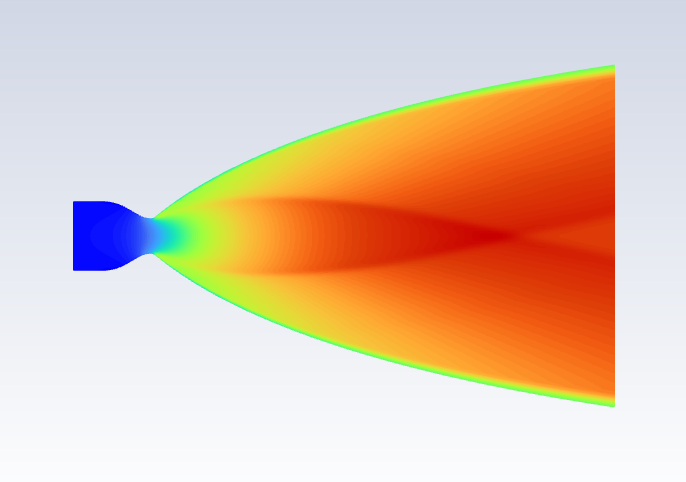
Technical Specifications
- Thrust: 186.36 kN (41,900 lbf) in vacuum
- Specific Impulse: 443 seconds (vacuum)
- Propellants: Liquid Hydrogen / Liquid Oxygen
- Chamber Pressure: 5.88 MPa (853 psi)
- Burn Time: 640 seconds
Chamber Performance Data
| Parameter | Injector | Nozzle inlet | Nozzle throat | Nozzle exit | Unit |
|---|---|---|---|---|---|
| Pressure | 6.0000 | 5.8470 | 3.3895 | 0.0033 | MPa |
| Temperature | 3285.1914 | 3279.1233 | 3068.4545 | 858.0217 | K |
| Enthalpy | -1077.4925 | -1107.4919 | -2312.2874 | -11068.9544 | kJ/kg |
| Entropy | 19.4088 | 19.4178 | 19.4178 | 19.4178 | kJ/(kg·K) |
| Internal energy | -3374.3023 | -3399.8056 | -4440.5398 | -11653.8965 | kJ/kg |
| Specific heat (p=const) | 7.3136 | 7.3086 | 6.5122 | 2.9463 | kJ/(kg·K) |
| Specific heat (V=const) | 6.2479 | 6.2442 | 5.5627 | 2.2645 | kJ/(kg·K) |
| Gamma | 1.1706 | 1.1705 | 1.1707 | 1.3010 | |
| Isentropic exponent | 1.1554 | 1.1554 | 1.1556 | 1.1604 | |
| Gas constant | 0.6991 | 0.6991 | 0.6996 | 0.6817 | kJ/(kg·K) |
| Molecular weight (M) | 11.8924 | 11.8937 | 11.9876 | 12.1961 | |
| Molecular weight (MW) | 0.01189 | 0.01189 | 0.01199 | 0.0122 | |
| Density | 2.6123 | 2.5507 | 1.5926 | 0.0056 | kg/m³ |
| Sonic velocity | 1629.0565 | 1627.4443 | 1571.4917 | 872.3741 | m/s |
| Velocity | 0.0000 | 244.4967 | 1571.4917 | 4470.2264 | m/s |
| Mach number | 0.0000 | 0.1505 | 1.0000 | 5.1242 | |
| Area ratio | 4.0000 | 4.0000 | 1.0000 | 100.0000 | |
| Mass flux | 624.7807 | 624.7807 | 2502.7763 | 25.0198 | kg/(m²·s) |
| Mass flux (relative) | 1.041e-04 | 1.069e-04 | kg/(N·s) | ||
| Viscosity | 9.845e-05 | 9.831e-05 | 9.361e-05 | 3.254e-05 | kg/(m·s) |
| Conductivity, frozen | 0.5968 | 0.5958 | 0.5528 | W/(m·K) | |
| Specific heat (p=const), frozen | 4.136 | 4.135 | 4.028 | 2.946 | kJ/(kg·K) |
| Prandtl number, frozen | 0.6824 | 0.6824 | 0.6887 | 0.6055 | |
| Conductivity, effective | 0.5968 | 0.5958 | 0.5528 | 0.1583 | W/(m·K) |
| Specific heat (p=const), effective | 7.314 | 7.309 | 6.512 | 2.946 | kJ/(kg·K) |
| Prandtl number, effective | 0.5057 | 0.5055 | 0.5134 | 0.6055 |
Species Composition Data
| Species | Injector mass fractions | Injector mole fractions | Nozzle inlet mass fractions | Nozzle inlet mole fractions | Nozzle throat mass fractions | Nozzle throat mole fractions | Nozzle exit mass fractions | Nozzle exit mole fractions |
|---|---|---|---|---|---|---|---|---|
| H | 0.0022903 | 0.0270224 | 0.0022839 | 0.0269498 | 0.0016715 | 0.0198794 | 0.0016974 | 0.0198794 |
| H2 | 0.0598531 | 0.3530959 | 0.0598464 | 0.3530954 | 0.0596967 | 0.3549907 | 0.0601180 | 0.3637140 |
| H2O | 0.9066409 | 0.5985006 | 0.9068513 | 0.5987058 | 0.9189761 | 0.6114971 | 0.9398820 | 0.6362860 |
| H2O2 | 0.0000081 | 0.0000028 | 0.0000079 | 0.0000028 | 0.0000032 | 0.0000011 | ||
| HO2 | 0.0000153 | 0.0000055 | 0.0000150 | 0.0000054 | 0.0000055 | 0.0000020 | ||
| O | 0.0011307 | 0.0008404 | 0.0011212 | 0.0008335 | 0.0005413 | 0.0004056 | ||
| O2 | 0.0014905 | 0.0005540 | 0.0014790 | 0.0005497 | 0.0007343 | 0.0002751 | ||
| OH | 0.0285710 | 0.0199784 | 0.0283952 | 0.0198576 | 0.0183713 | 0.0129489 |
Throttled Chamber Performance
| Throttle value | Pressure, MPa | c ef (SL), m/s | Isp (SL), s | Thrust (SL), kN | c ef (opt), m/s | Isp (opt), s | Thrust (opt), kN | c ef (vac), m/s | Isp (vac), s | Thrust (vac), kN |
|---|---|---|---|---|---|---|---|---|---|---|
| 0.9658 | 5.79 | 2374.690 | 242.151 | 96.114 | 4314.308 | 439.937 | 174.619 | 4445.210 | 453.285 | 179.917 |
| 0.9914 | 5.95 | 2409.963 | 245.748 | 100.131 | 4315.631 | 440.072 | 179.310 | 4446.496 | 453.416 | 184.747 |
| 1.0000 | 6.00 | 2421.385 | 246.913 | 101.475 | 4316.065 | 440.116 | 180.876 | 4446.918 | 453.459 | 186.360 |
| 1.0171 | 6.10 | 2443.670 | 249.185 | 104.158 | 4316.919 | 440.203 | 184.002 | 4447.748 | 453.544 | 189.578 |
| 1.0427 | 6.26 | 2475.921 | 252.474 | 108.193 | 4318.175 | 440.331 | 188.695 | 4448.969 | 453.669 | 194.411 |
| 1.0684 | 6.41 | 2506.814 | 255.624 | 112.368 | 4319.399 | 440.456 | 193.390 | 4450.159 | 453.790 | 199.245 |
| 1.0940 | 6.57 | 2536.439 | 258.645 | 116.288 | 4320.593 | 440.578 | 198.086 | 4451.320 | 453.908 | 204.080 |
| 1.1196 | 6.72 | 2564.877 | 261.545 | 120.348 | 4321.758 | 440.697 | 202.783 | 4452.453 | 454.024 | 208.916 |
| 1.1453 | 6.88 | 2592.044 | 264.315 | 124.408 | 4322.928 | 440.816 | 207.483 | 4453.584 | 454.139 | 213.754 |
| 1.1709 | 7.03 | 2618.331 | 266.995 | 128.283 | 4324.040 | 440.929 | 212.183 | 4454.666 | 454.249 | 218.593 |
| 1.1966 | 7.19 | 2643.637 | 269.576 | 132.565 | 4325.127 | 441.040 | 216.884 | 4455.724 | 454.357 | 223.432 |
| 1.2222 | 7.34 | 2668.021 | 272.062 | 136.655 | 4326.191 | 441.149 | 221.585 | 4456.759 | 454.463 | 228.273 |